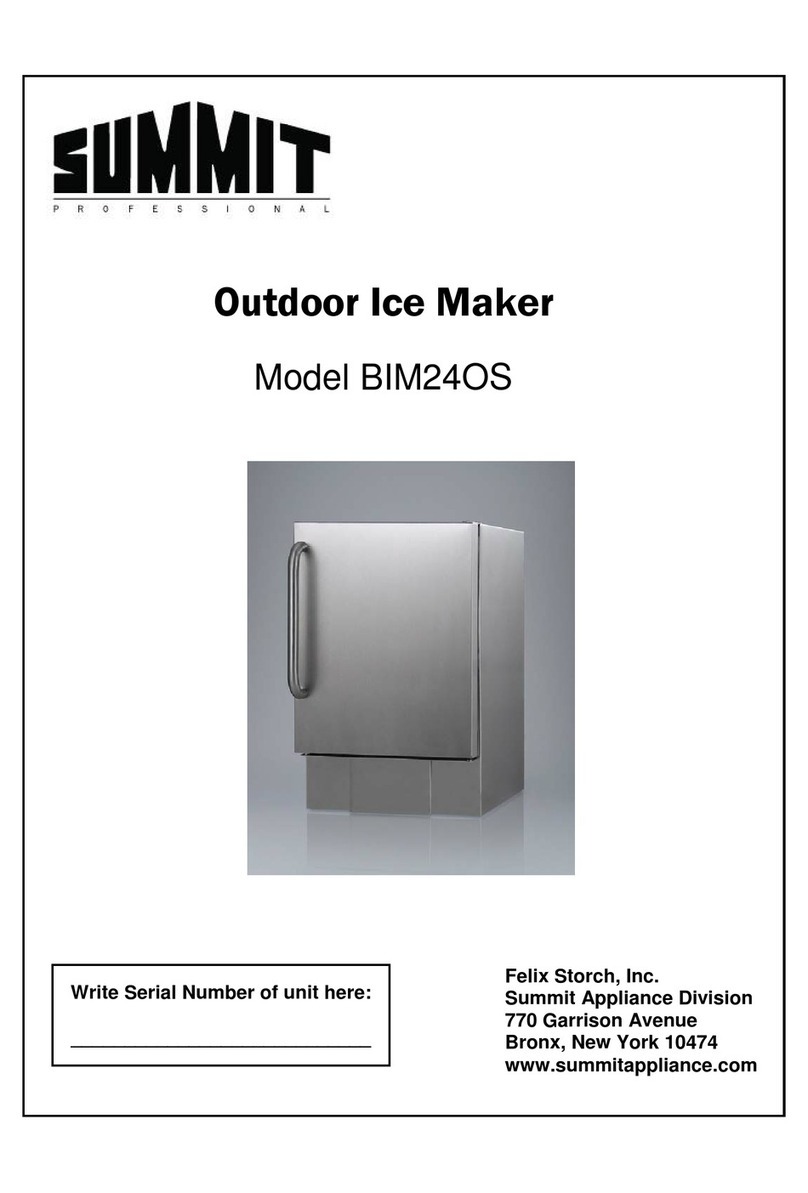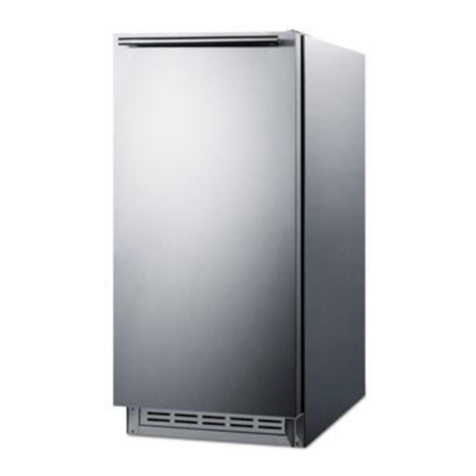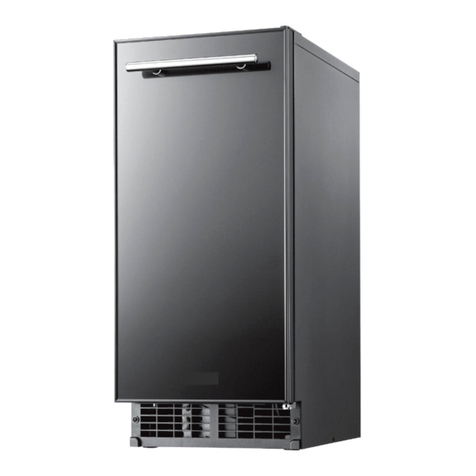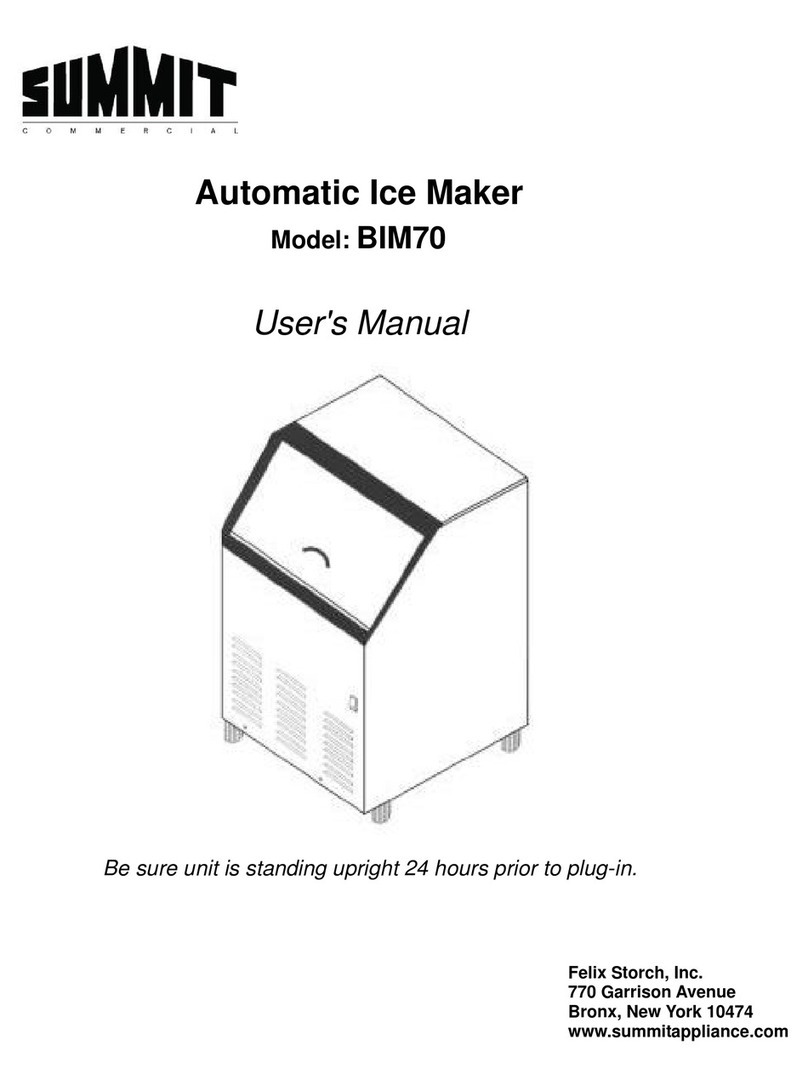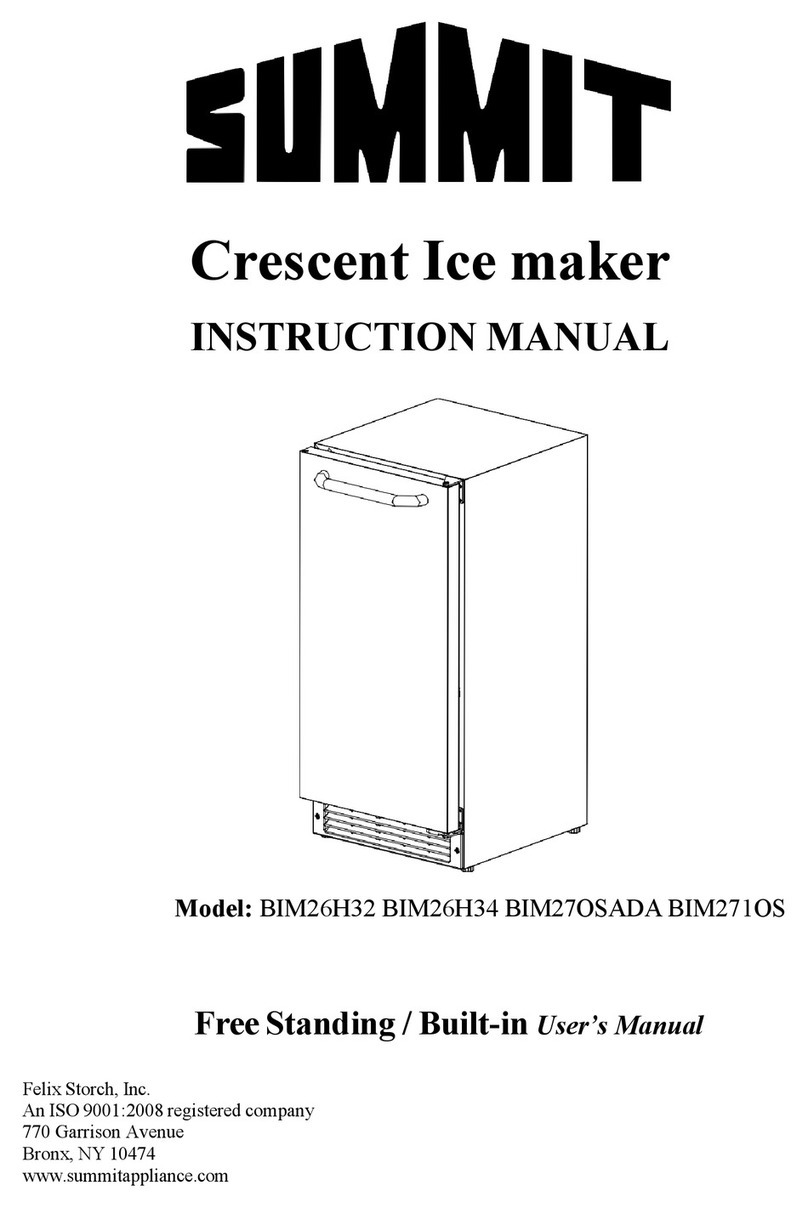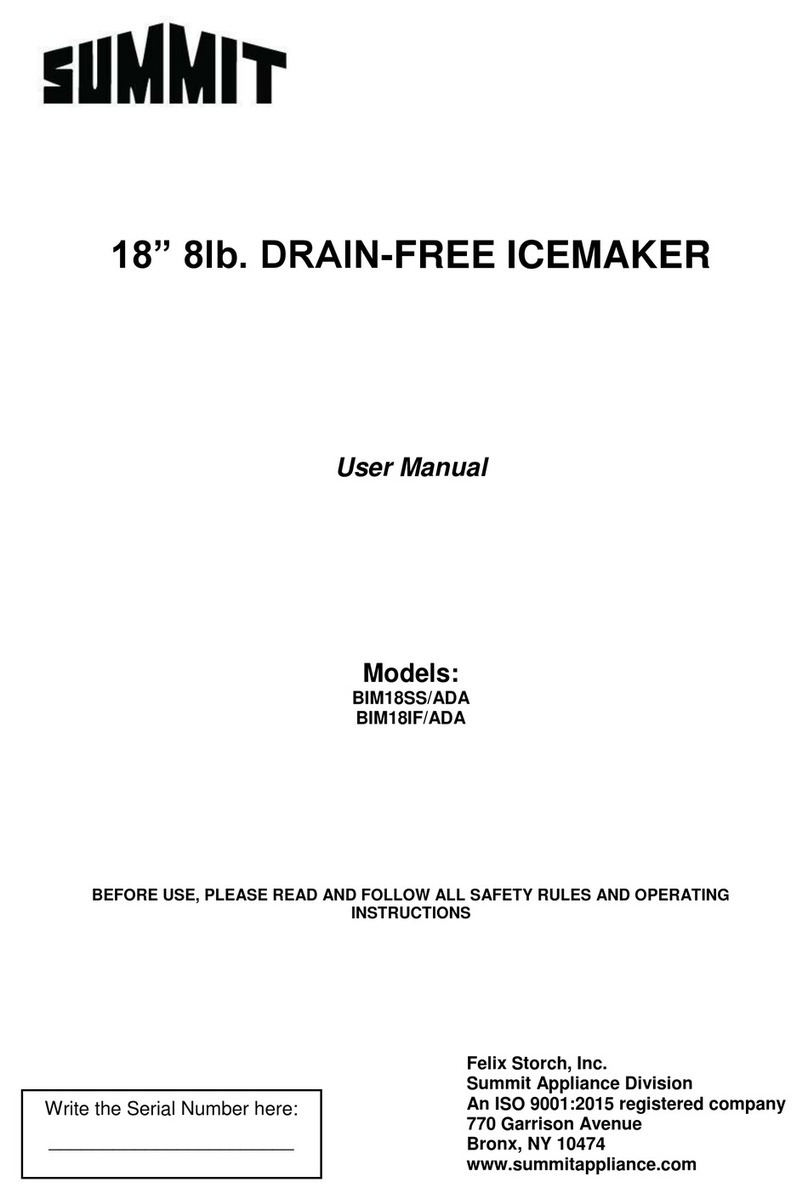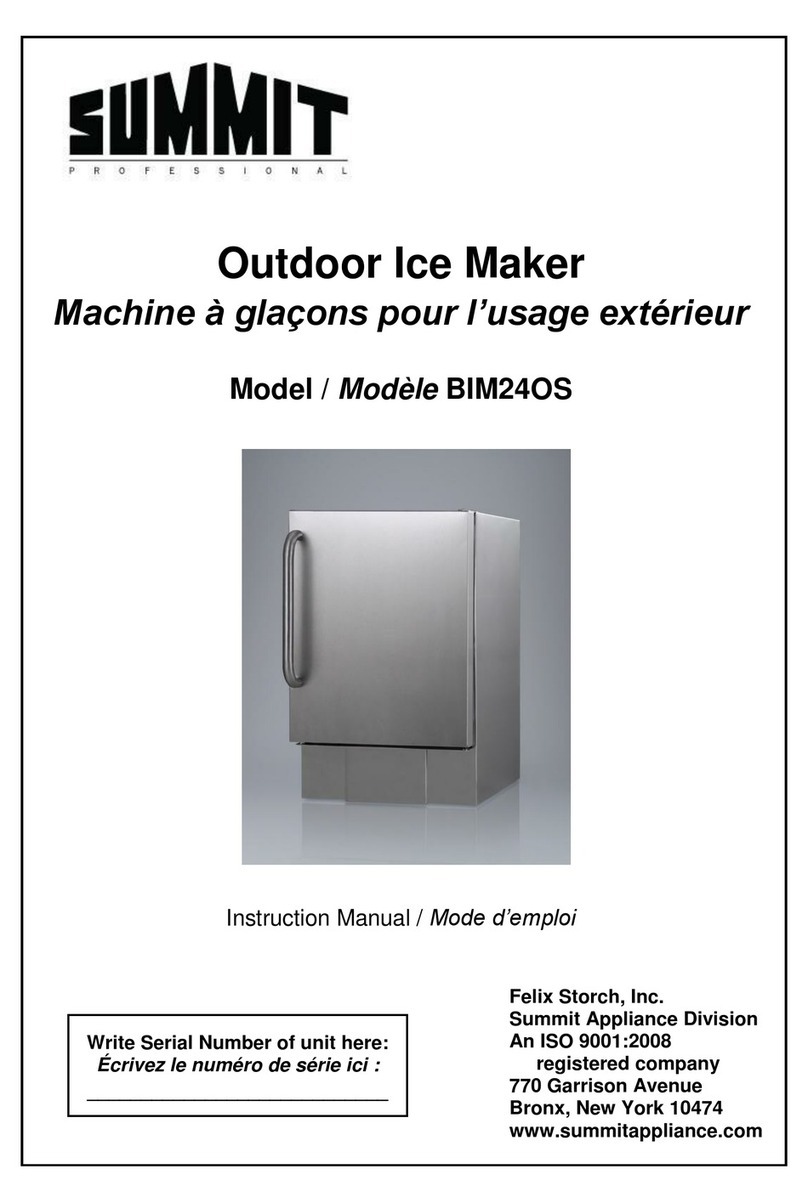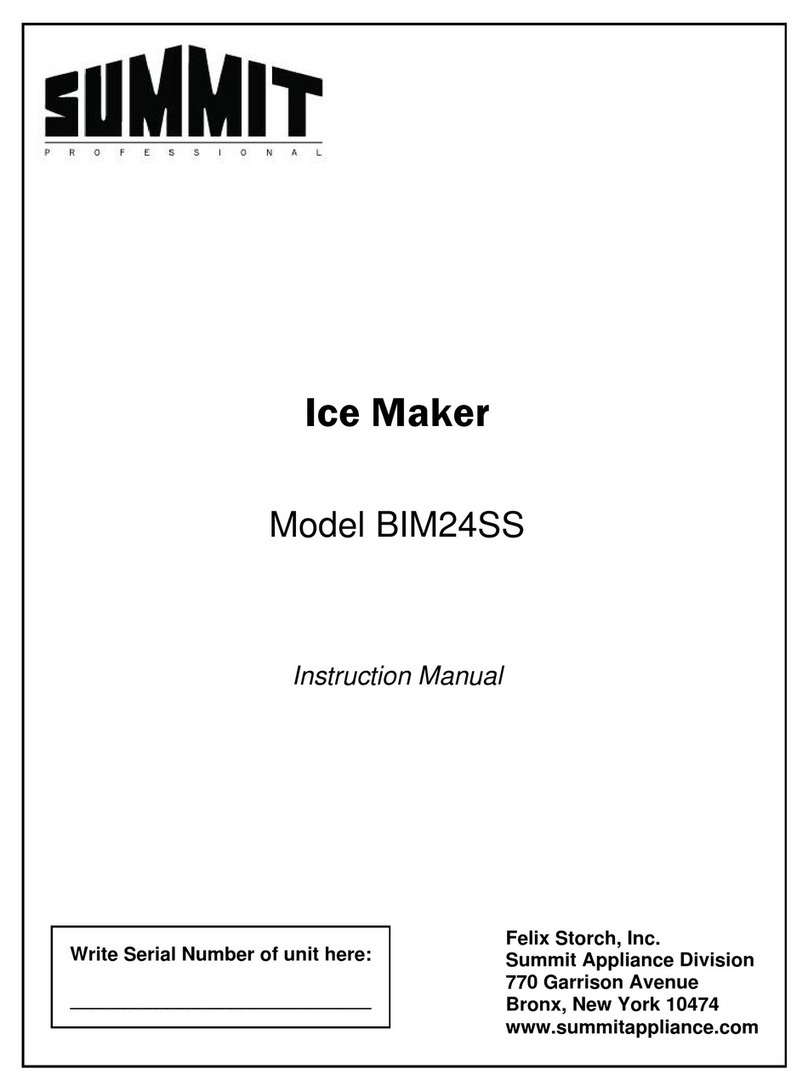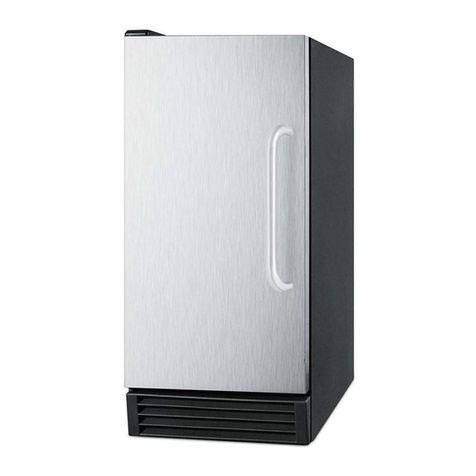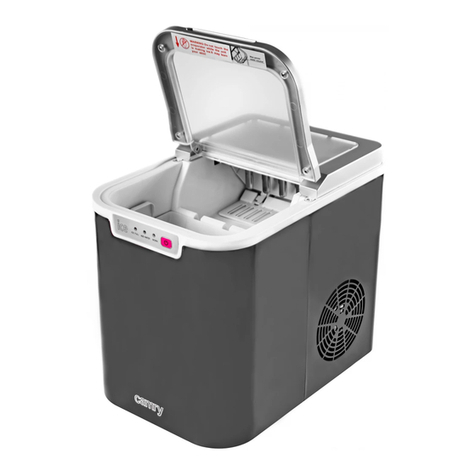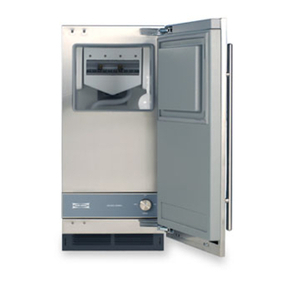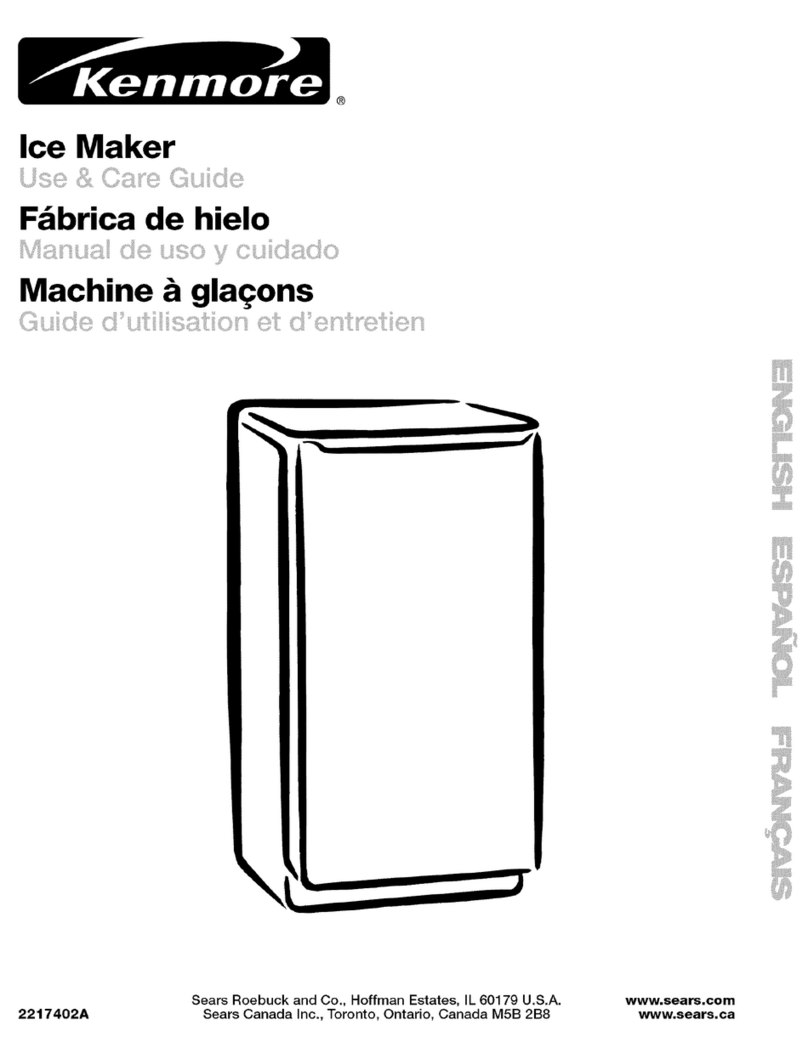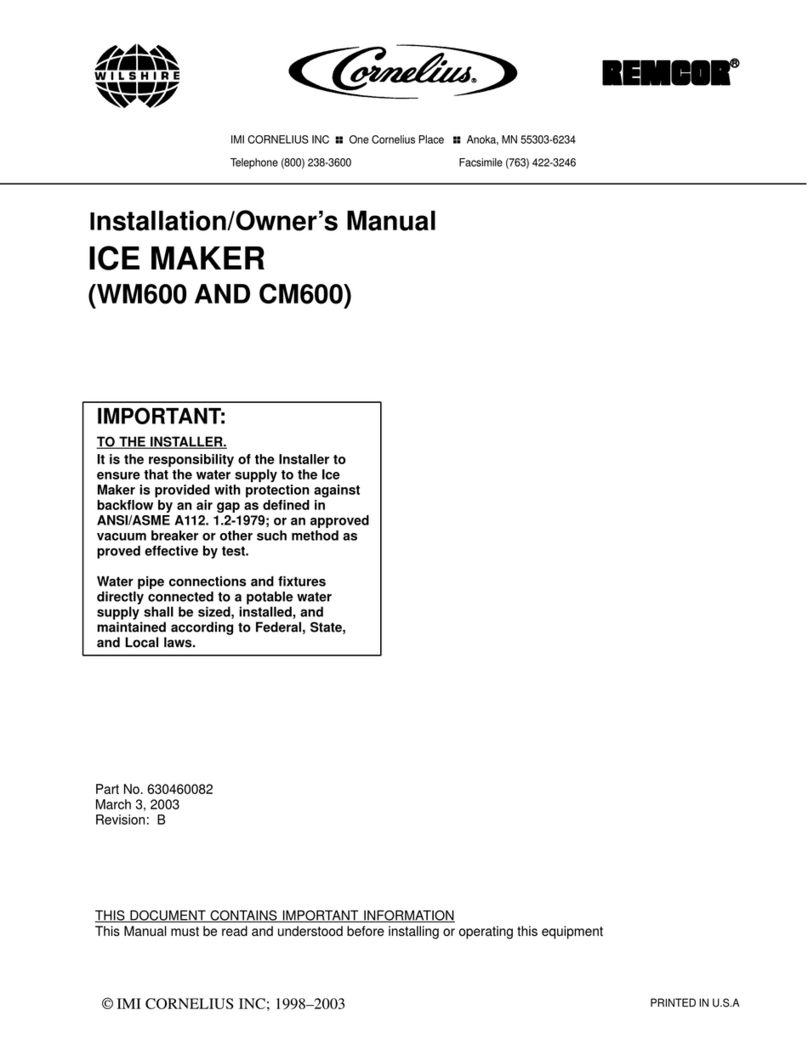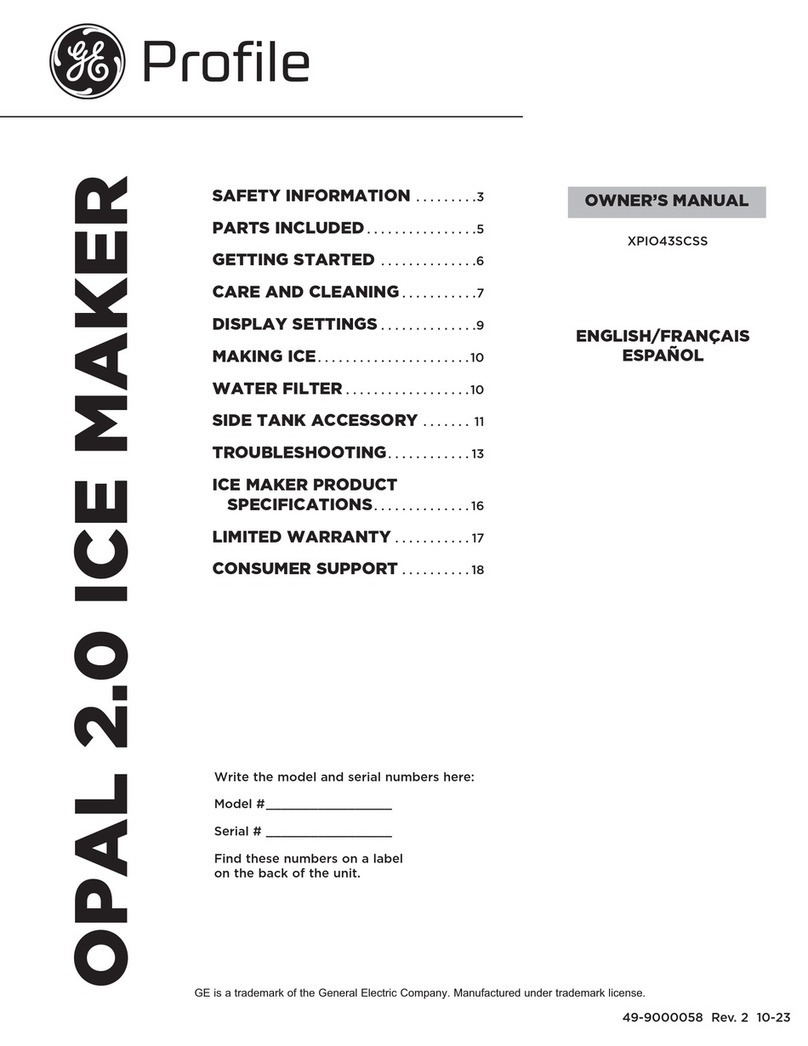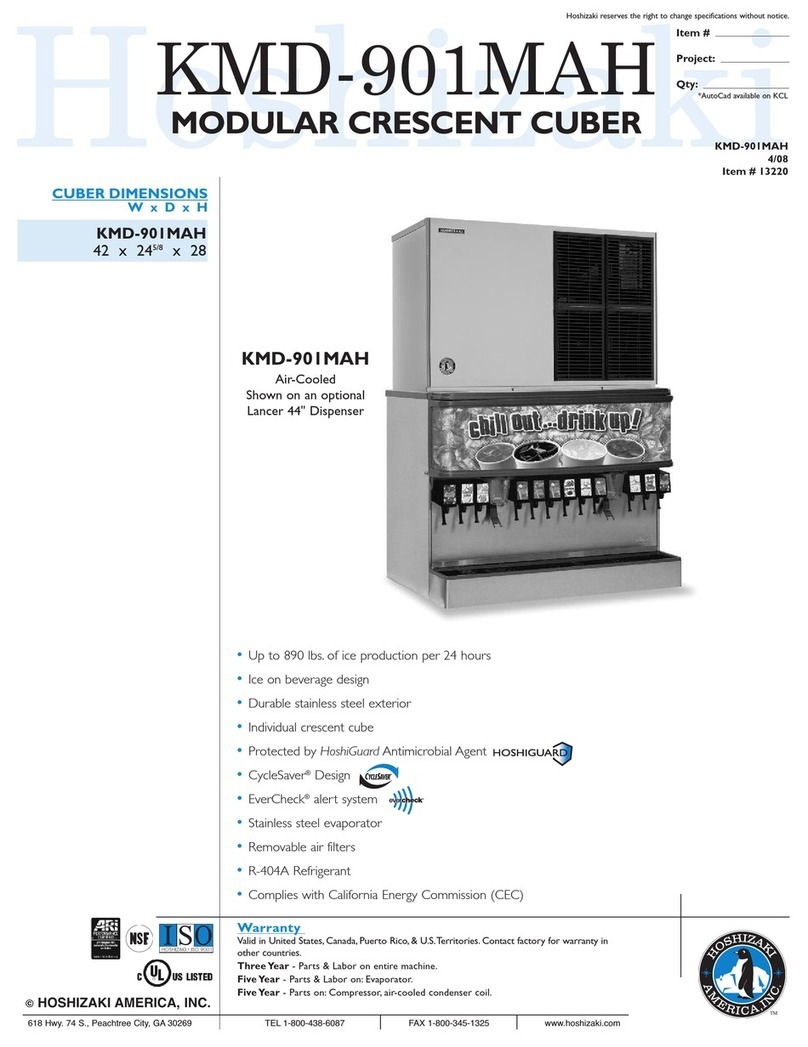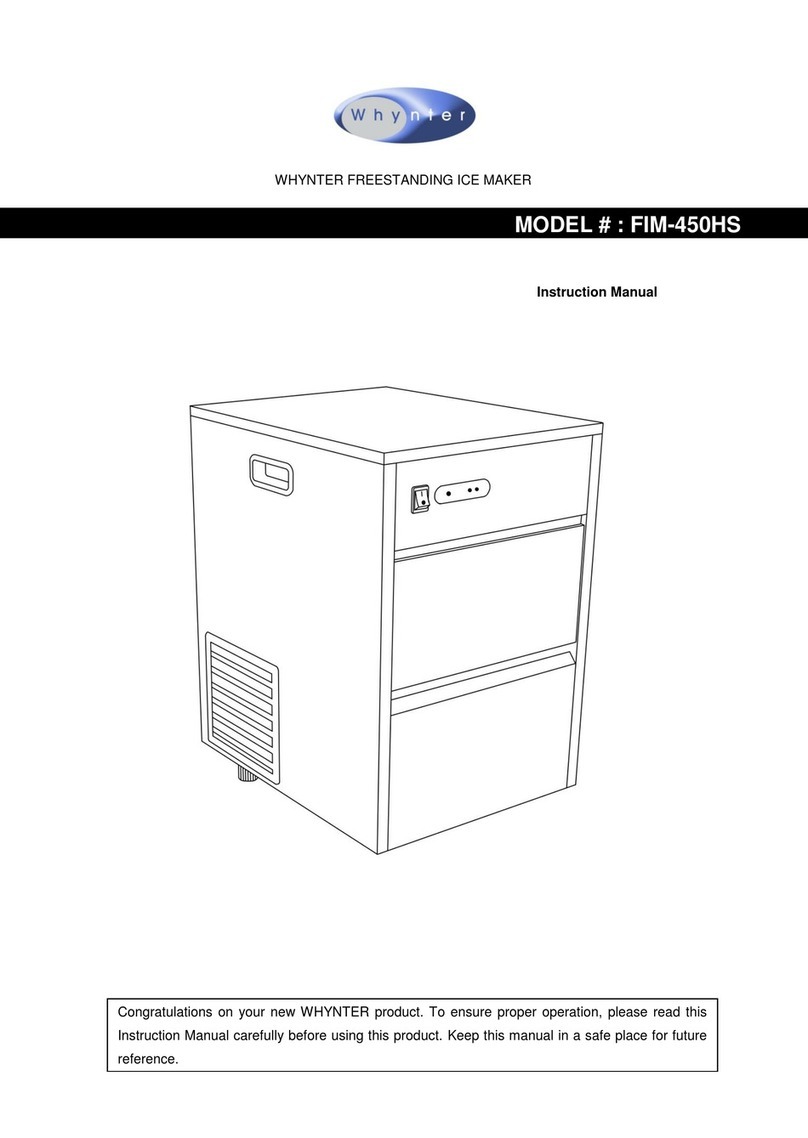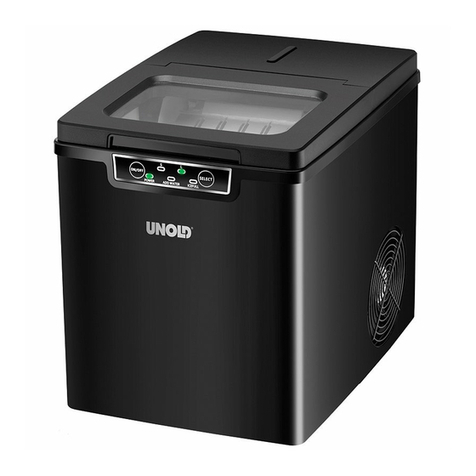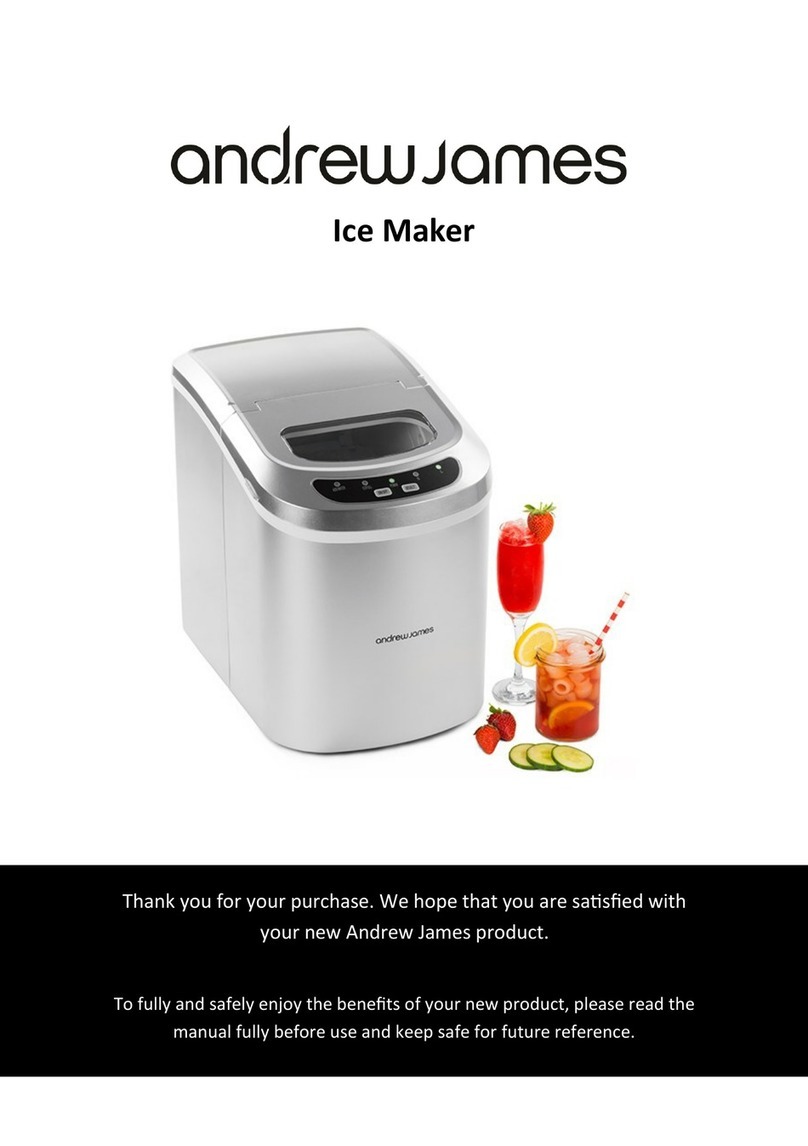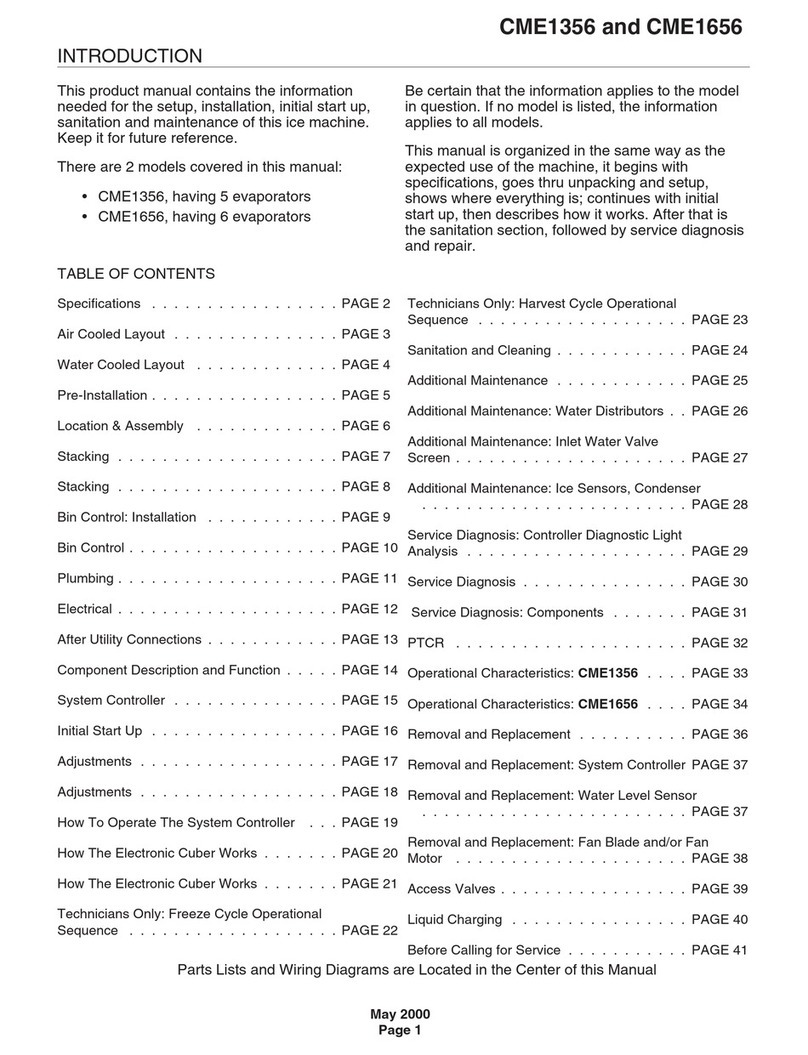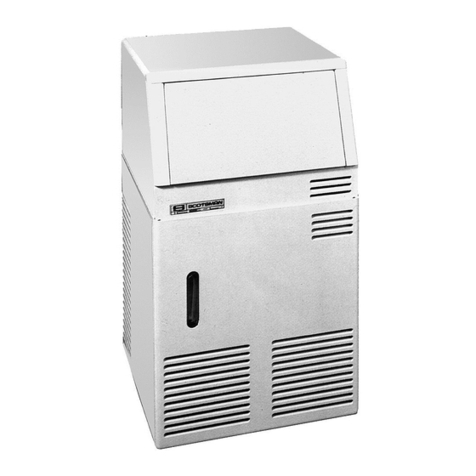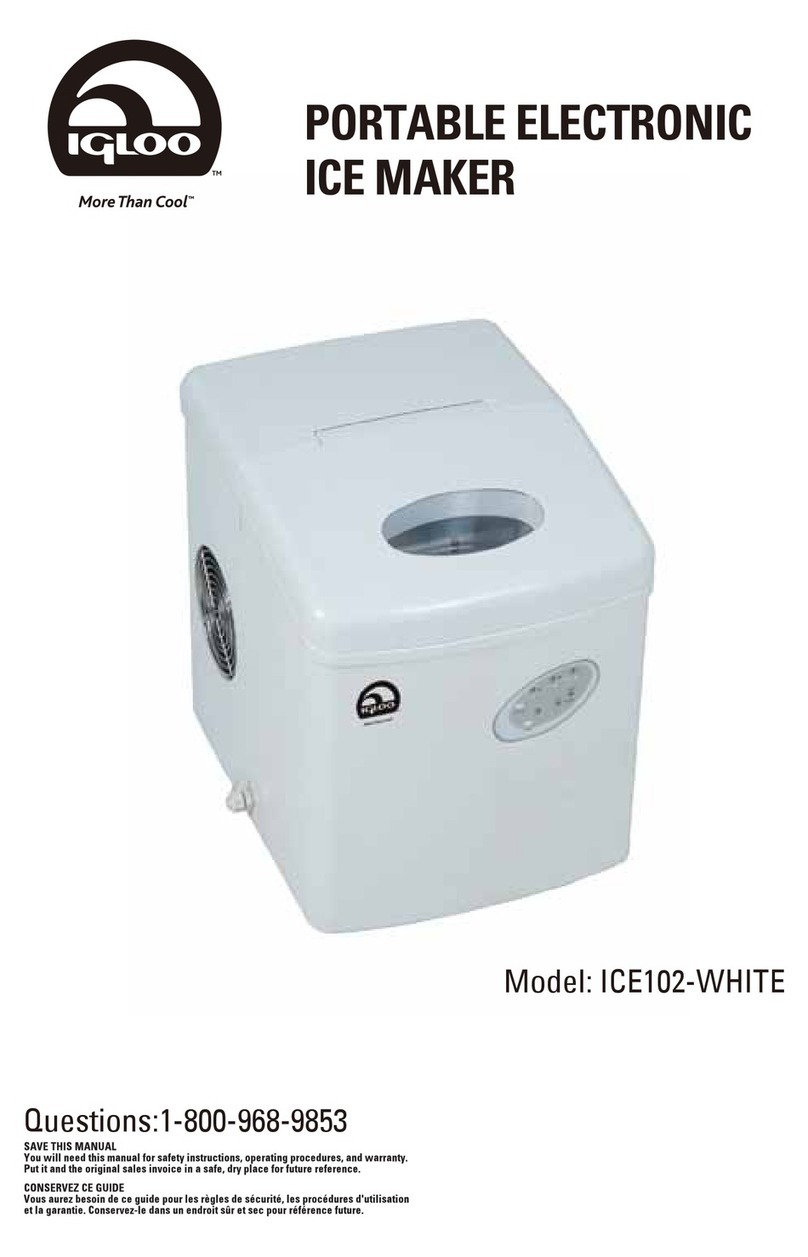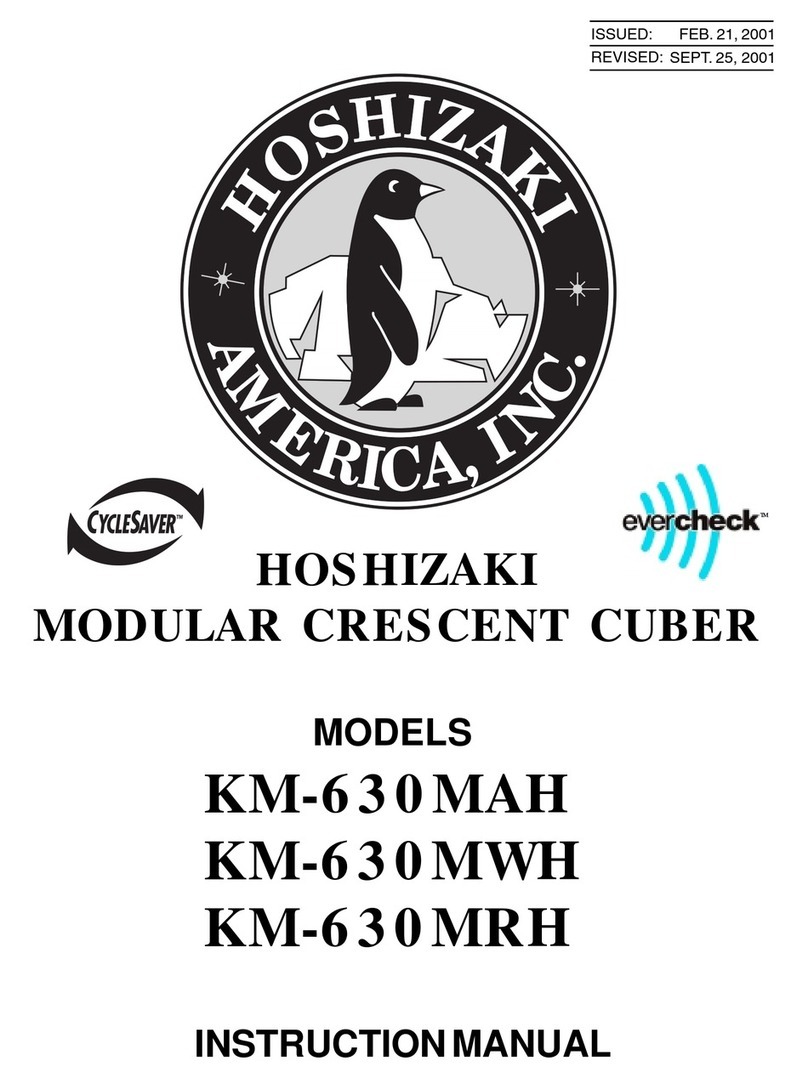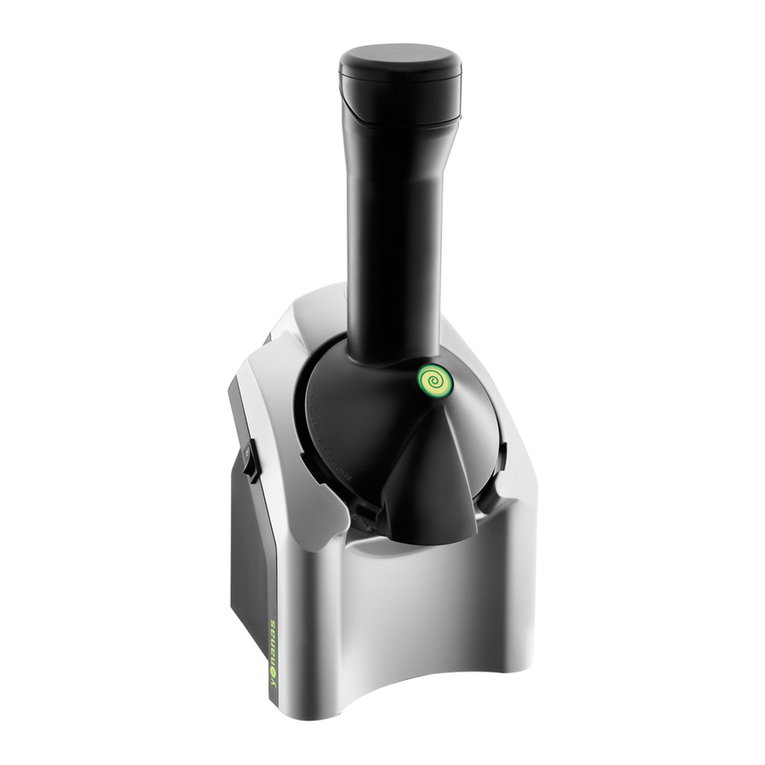OPERATING YOUR ICE MAKER
Initial Start-Up Operation
1 Plug the appliance into a 115/120V AC polarized and grounded wall electrical outlet.
2 Place the ON-OFF switch in the ON position.
3 Make sure the water supply is on. As soon as the inner mechanism reaches the proper
temperature, the icemaker mechanism will ll the mold with water.
4 The rst cubes may be small because of air in the water line. Later cubes will be of
standard crescent- moon shape.
5 Approximate time for the rst cycle is between 30-40 minutes.
6 Each cycle will take approximately 0.15 quarts of water so the ice bin should be full
after 11 hours.
IMPORTANT Throw away all ice cubes made during the rst 3 hours of operation.
When the ice bin is full, the ice-making mechanism will automatically shut off. However
the system will continue to cool and maintain the supply of cubes.
Ice delivery may be interrupted by raising the metal arm into an upright
position (see illustration).
If the ice maker is not used regularly, it is recommended that the ice
bin be emptied periodically to insure fresh ice.
Sometimes the cubes may appear cloudy. This should not be a cause
for concern and has nothing to do with the taste or chemical make-up of the water.
This unit should be defrosted approximately every 4-6 weeks or when frost on the ice
maker walls is excessive or ¼” thick. To defrost, turn the unit off, remove cubes and keep
door open at least two inches.
This appliance is not designed to operate when exterior temperatures are below 45°F.
If you have seasons with temperatures routinely that low, the unit should be unplugged,
cleaned and stored for the winter. Always leave the door slightly ajar during storage so
odors will not build up inside the unit. Once a season, the stainless steel exterior can be
lightly coated with WD-40 to restore luster and protect the nish.
For Best Performance of Your Outdoor Ice Maker
Keep appliance out of direct sunlight
Allow for adequate air circulation
Do not use an outlet operating on a switch
Check GFCI cord regularly
Minimize door opening time
4
